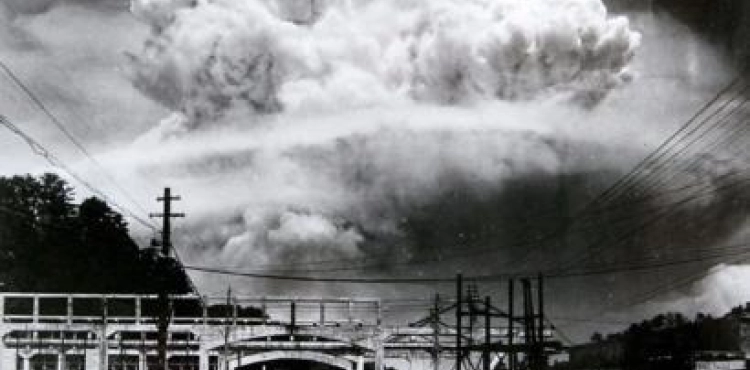A US B-29 aircraft dropped the first atomic bomb in history on Hiroshima in western Japan. Three days later, the nightmare repeated itself in Nagasaki, in the southwest.
The following are the devastating effects of these two nuclear bombs, which were not used until now in wartime, and killed 140,000 people in Hiroshima and 74,000 in Nagasaki between August and the end of 1945.
The first thing that Hiroshima residents noticed on the morning of 6 August 1945 was a "big fireball," to quote the International Committee of the Red Cross.
It was the "A" bomb, or "Little Boy," which exploded 600 meters above Hiroshima with a force equivalent to a force of 15,000 tons of TNT.
The bomb that fell on Nagasaki, called "The Fat Man," was more powerful with a force equivalent to 21,000 tons of "TNT".
The temperature at the bomb drop center in Hiroshima is estimated to have reached about 7,000 degrees. This high heat caused serious burns to the population, most of which were fatal within a radius of about 3 kilometers.
The flash of the explosions caused temporary vision loss and irreversible eye damage, according to the International Committee of the Red Cross.
The heat radiation that followed the explosions within a fraction of a second led to the outbreak of many fires, destroying everything within an area of ​​several square kilometers in Hiroshima and Nagasaki, where most of the buildings were made of wood at the time.
Burns and fires are thought to cause more than half of the immediate deaths in Hiroshima.
Many people were killed or seriously injured by flying debris, while others died as buildings collapsed or were thrown into the air.
The atomic explosions released harmful radiation in the short and long term, as "radiation-induced disease" affected many of those who survived the devastation in Hiroshima and Nagasaki.
Syndromes of "acute radiation" - vomiting, headache, diarrhea, bleeding and hair loss - have resulted in some deaths within weeks or months.
And "hibakusha" (bomb survivors in Japanese) for the rest of their lives remained highly vulnerable to some types of cancer.
Of the approximately 50,000 people exposed to radiation in the two cities, and their condition was followed up by the American Japanese Research Organization (the Radiation Effects Research Foundation), about 100 people died of leukemia and 850 of them were due to other types of cancer associated with radiation.
Hiroshima and Nagasaki were the final blow to Japan, which surrendered on August 15, 1945, thus ending World War II.
But historians are still debating whether this double nuclear attack actually saved more lives by hastening an end to the conflict.
Many hibakusha are accompanied by physical and psychological ordeal. Many remained silent about their pain and suffered discrimination, especially in matters of marriage, because many Japanese mistakenly believed for decades that "radiation sickness" was hereditary, rather contagious, and thus avoided contact with the Hibakusha.
After the war, the Japanese government established the status of "official victim" of the atomic bombs, providing them with free medical care. However, this right was granted under restrictive conditions and did not extend to thousands of victims.
Many Hibakusha became activists for peace and anti-nuclear weapons, and traveled the world to talk about their experience.
Last year, Pope Francis visited Hiroshima and Nagasaki to say "no" to atomic weapons.
In 2016, Barack Obama was the first still in office to visit Hiroshima. He also called for a world free of nuclear weapons, without apologizing on behalf of the United States for the tragedy of Japan in August 1945.












